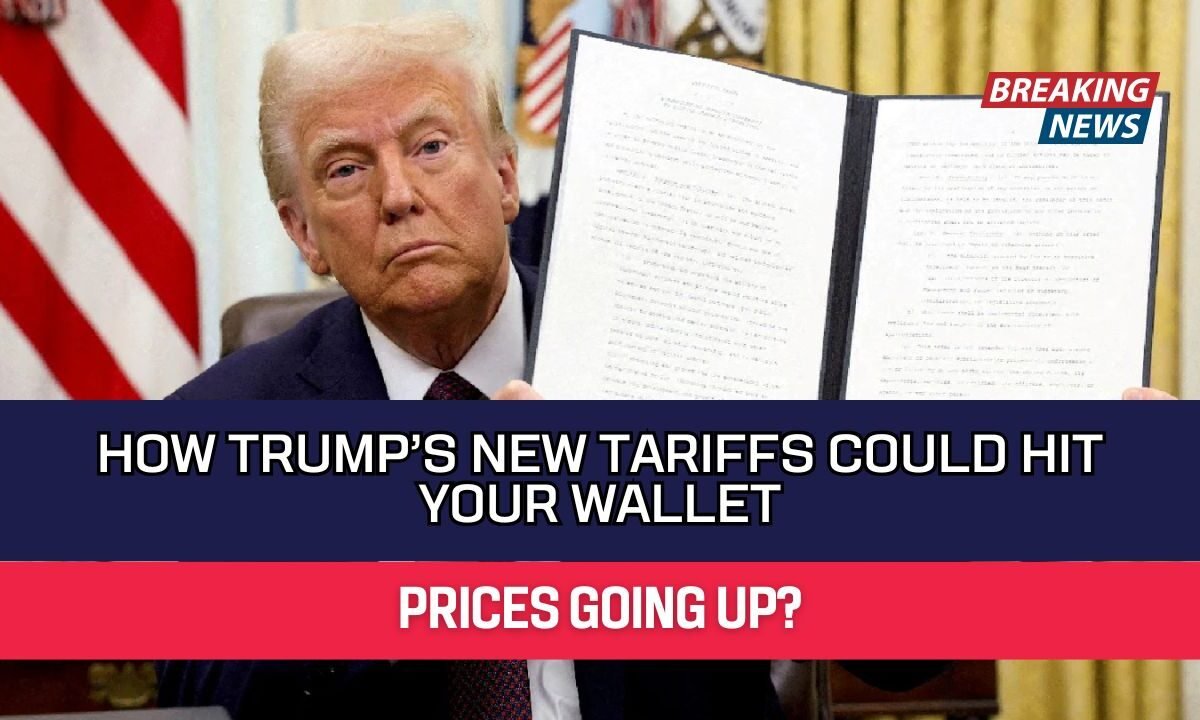President Donald Trump has started new tariffs (extra taxes) on things the U.S. buys from many countries. These taxes now hit goods from over 60 countries and the European Union.
While the White House says this will help the U.S. economy grow, there are signs that families and businesses are already feeling the strain. This article explains what is going on, why it matters, and what might come next.
What Are These New Tariffs?
The U.S. government has begun charging 10% or more extra on imported products from lots of countries. For example:
- Goods from the EU, Japan, and South Korea now face 15% tariffs.
- Items from Taiwan, Vietnam, and Bangladesh face 20% tariffs.
- The administration expects big investments in return, though no firm numbers have been shared. Trump even said this change will bring in “hundreds of billions of dollars,” but admitted the exact amount is still unclear.
What the White House Thinks
The White House believes that once companies see the new rules clearly, they will invest more in the U.S. This could mean more factories, new jobs, and a stronger manufacturing base. They argue that knowing the plan should help businesses and workers prepare and adapt.
Early Signs of Trouble
But right now, some data show that the economy is already feeling pressure:
- Hiring slowed down after April, when the first tariff threats started.
- Prices began rising – a hint of inflation.
- In some important areas, home values dropped.
- Economists explain that when things cost more, workers’ real wages (what you can actually buy with what you earn) drop too. This can make companies produce less and hire fewer people.
A Slow Burn, Not a Sudden Crash
Most experts don’t expect a dramatic fall. Instead, they warn of a gradual slowdown. Nothing catastrophic, but like fine sand in gears—slow and steady drag, making things harder to move forward quickly.
Trade Gap and Market Effects
People tried to rush in goods before tariffs hit, so the trade deficit (what the U.S. buys vs sells) still grew by 38% compared to last year. Meanwhile:
- Construction spending dropped about 2.9%.
- The factory jobs Trump promised haven’t appeared—instead, job losses are visible.
A Messy Roll‑Out
The tariff rollout has been chaotic. Plans kept changing—some were delayed, some reversed, some raised, some announced by letters and emergency orders. Even trade officials from partner countries weren’t sure if the tariffs would start Thursday or Friday.
More Tariffs on India and More to Come
Trump added 25% tariffs on Indian goods tied to their buying of Russian oil, pushing their total to 50%. He also warned of upcoming tariffs on pharmaceutical drugs and new 100% tariffs on computer chips. All of this could keep the economy in a state of frozen uncertainty.
Legal Challenges Ahead
Trump is using a 1977 law to call it an “economic emergency.” But courts are now reviewing whether that was legal. If judges say this went too far, the government might need new legal reasons to keep the tariffs.
Critics Speak Out
Some former Trump supporters are pushing back. Former House Speaker Paul Ryan called the plan based on “whims” and predicted “choppy waters ahead”. Others, like Rachel West from The Century Foundation, warn that while Trump might adapt, many Americans are already paying for the uncertainty.
What About the Stock Market?
Despite all this, the stock market—especially the S&P 500—is doing well. It bounced back over 25% since April lows. Plus, recent tax cuts signed into law have given the administration hope that economic growth will pick up soon.
What Does This Mean for You?
- Prices on everyday items could rise.
- Jobs may become harder to find.
- Uncertainty means people and businesses might hold back on spending or investing.
- The impact could last for months or even years, not just days.
The new tariffs mark a major shift in U.S. trade policy, pushing up prices and slowing growth. While the White House expects clearer rules will spark manufacturing and investment, families and businesses may struggle with rising costs, lagging jobs, and deepening trade gaps.
Over time, courts, markets, and global partners will shape how this uncertain chapter unfolds.




